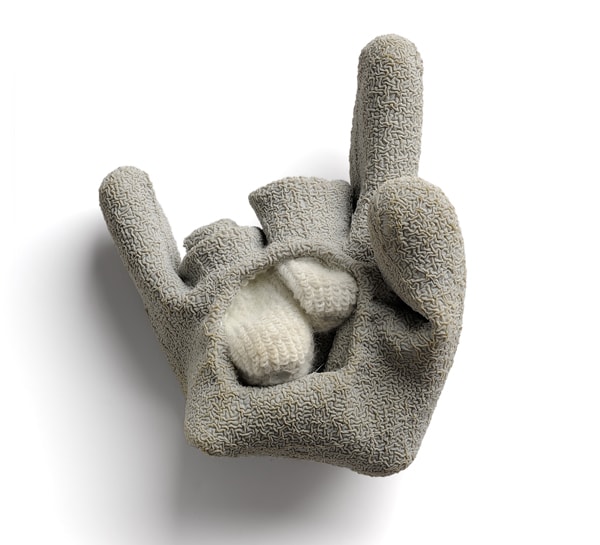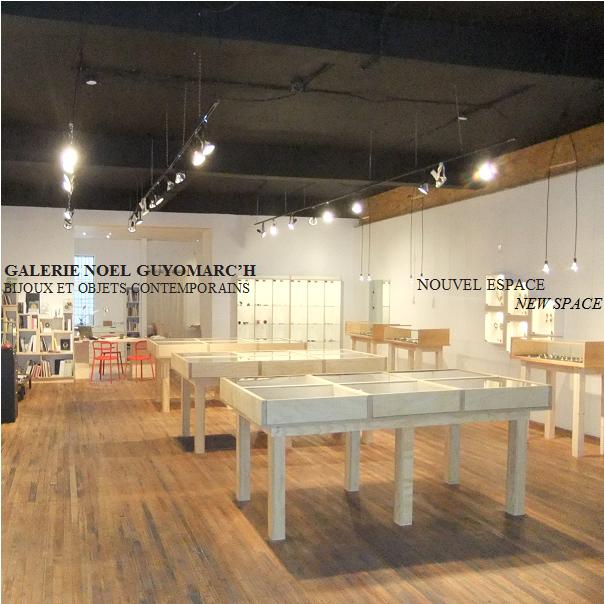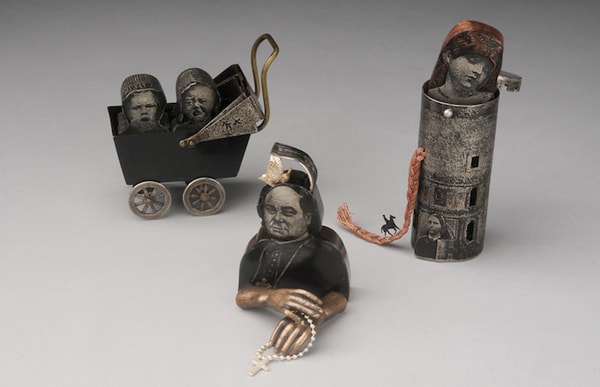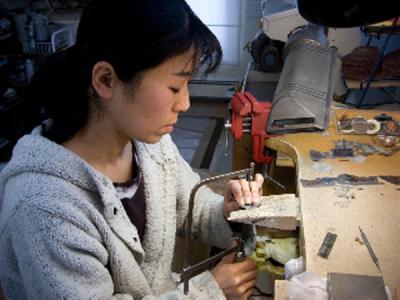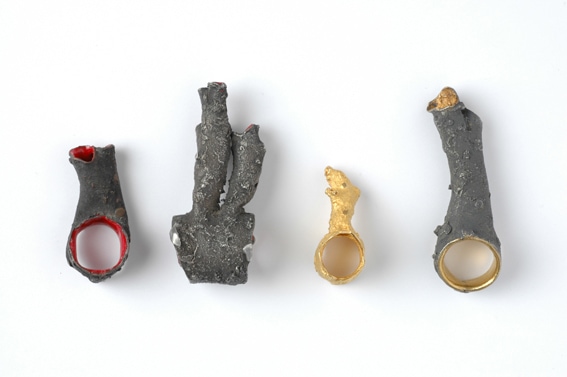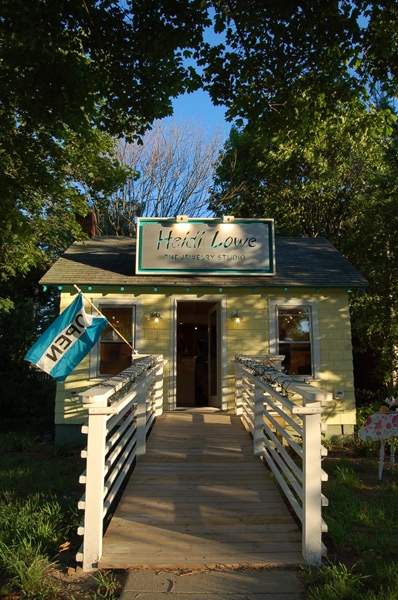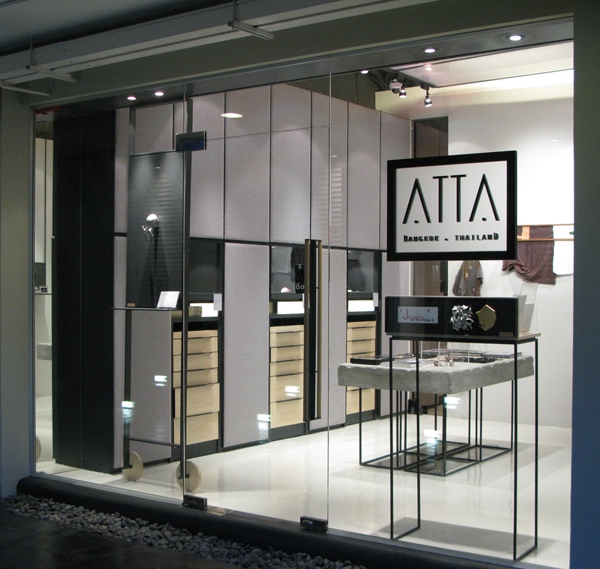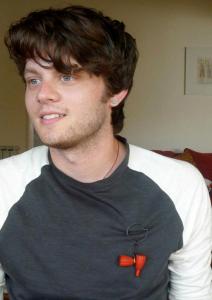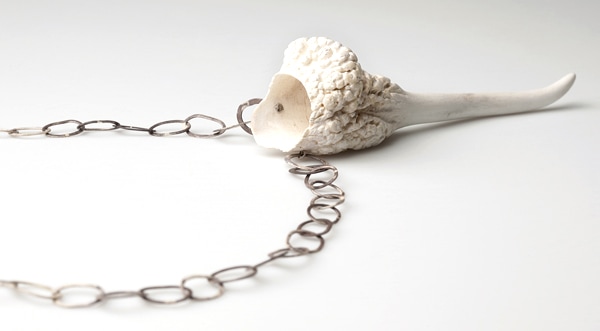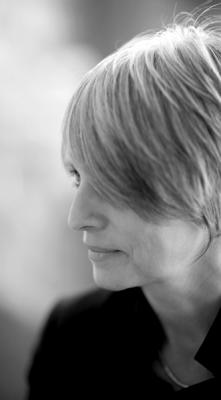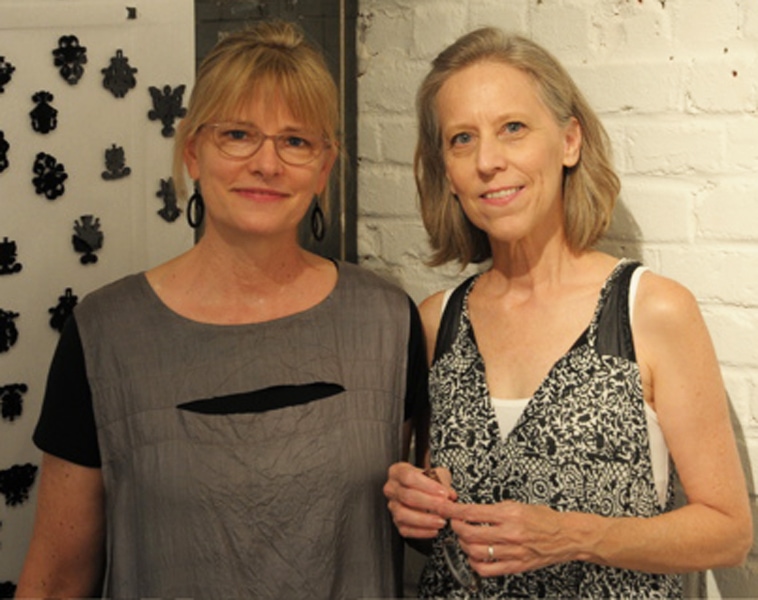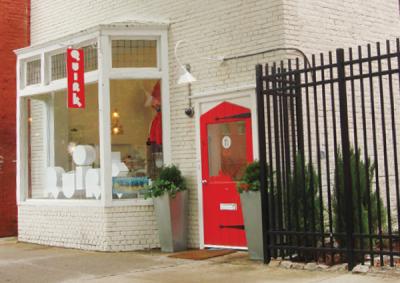Galerie Spektrum in Munich, Germany, is having an exhibition this month with Nanna Melland. For the second interview in his series, Aaron Decker talks with Nanna and so, with a bit of synchronicity, we will post this interview to accompany her show. Nanna is a Norwegian jeweler of real intensity. And Aaron is a recent graduate who is using a CCCD (Center for Craft, Creativity and Design) grant to travel in Europe and interview artists.
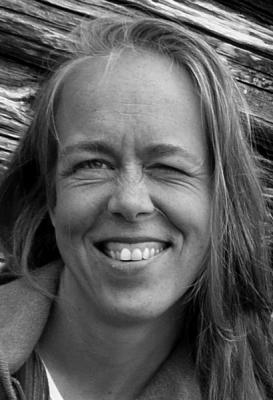 Aaron Decker: Where did you grow up?
Aaron Decker: Where did you grow up?
Nanna Melland: I grew up in Norway, Oslo, a country of natural extremes. From extreme cold and darkness to extreme brightness and almost extreme heat. As a child, I lived two years in Spain with my family.
Were you introduced to jewelry early on?
Nanna Melland: My father was a painter. He made his living from it. I grew up with that as a possibility. Tone Vigeland, the jewelry artist, was a friend of my parents and she liked my fathers painting, so they swapped. She would get a painting and my mother would get a piece of jewelry from her. From a very early age, I would recognize my mothers whereabouts from the sound of her Tone Vigeland bracelets. Tone Vigeland was my first encounter with contemporary jewelry. She started in the field of craft and now she has ended up in sculpture. Without that link, I do not think I would have gone into contemporary jewelry myself. When I decided to go into the arts, it was difficult to start painting because my father was a painter, so I began with jewelry and it felt very familiar.

Where did you study?
Nanna Melland: Well, many places. Do you mean jewelry school?
Yes.
Nanna Melland: I first started in a craft school in Oslo and finished a journeyman exam. Then I continued with jewelry design at a school in Copenhagen, Denmark –which by the way I didn’t finish. I only stayed for one year and discovered that I was not a designer. Finally I finished my studies at the Akademie der Bildenden Künste München, where I studied with Professor Otto Künzli for six and a half years.

